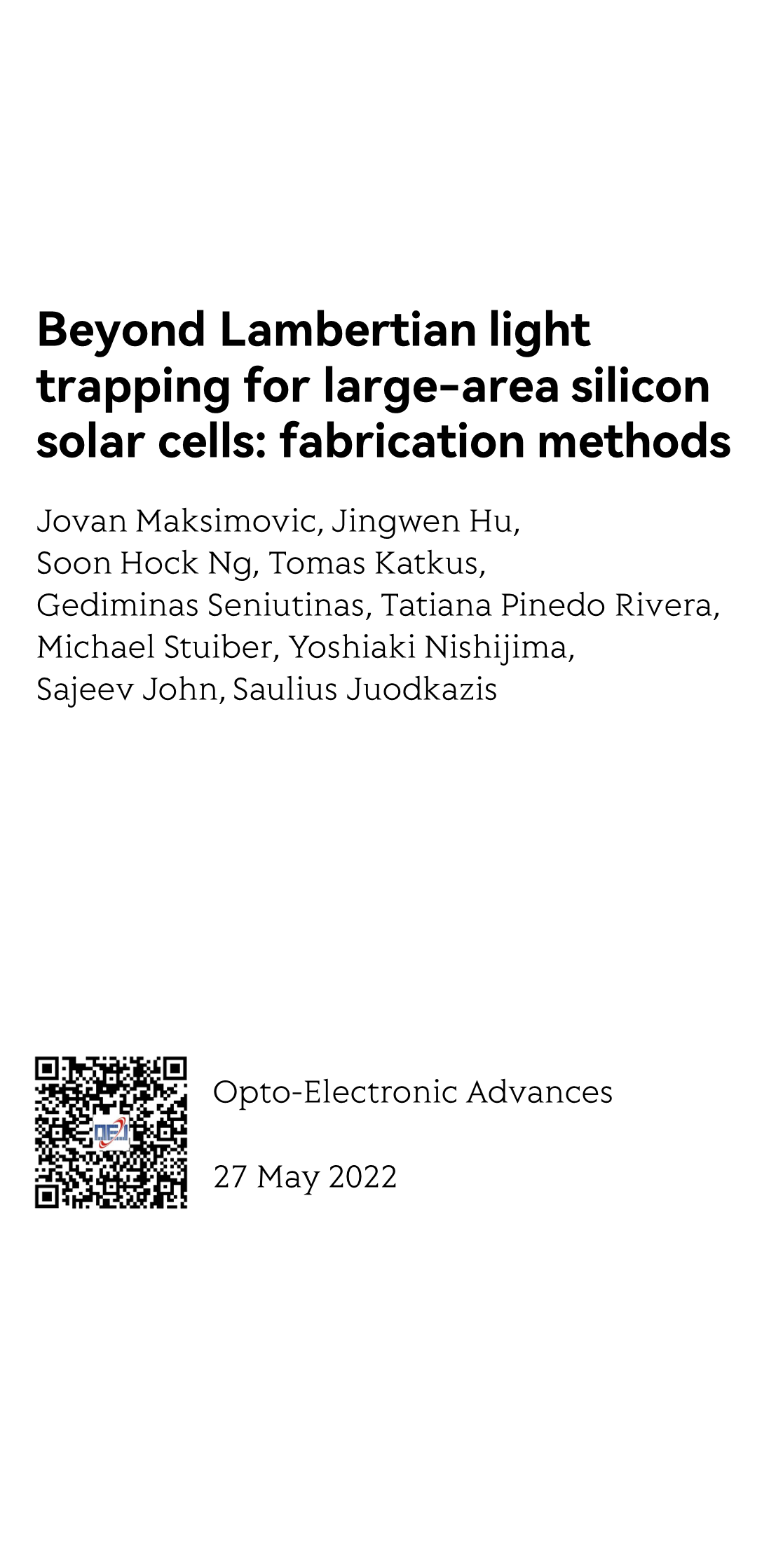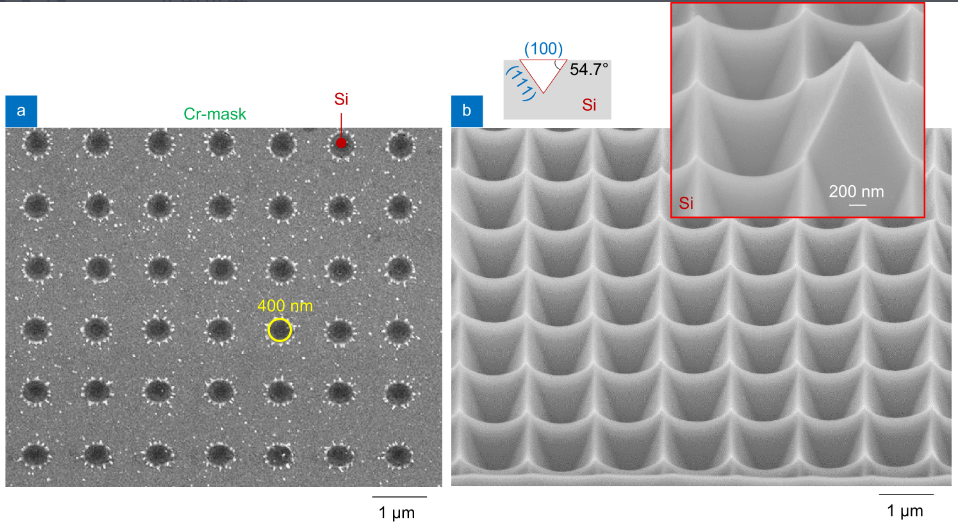(Peer-Reviewed) Beyond Lambertian light trapping for large-area silicon solar cells: fabrication methods
Jovan Maksimovic ¹, Jingwen Hu ¹, Soon Hock Ng ¹, Tomas Katkus ¹, Gediminas Seniutinas ¹, Tatiana Pinedo Rivera ², Michael Stuiber ², Yoshiaki Nishijima ³ ⁴, Sajeev John ⁵, Saulius Juodkazis ¹ ⁶
¹ Optical Sciences Centre and ARC Training Centre in Surface Engineering for Advanced Materials (SEAM), School of Science, Swinburne University of Technology, Hawthorn Vic 3122, Australia
² Melbourne Centre for Nanofabrication, ANFF Victoria, 151 Wellington Rd., Clayton Vic 3168 Australia
³ Department of Electrical and Computer Engineering, Graduate School of Engineering, Yokohama National University, 79-5 Tokiwadai, Hodogaya-ku, Yokohama 240-8501, Japan
⁴ Institute of Advanced Sciences, Yokohama National University, 79-5 Tokiwadai, Hodogaya-ku, Yokohama 240-8501, Japan
⁵ Department of Physics, University of Toronto, 60 St. George Street, Toronto, ON, M5S 1A7, Canada
⁶ World Research Hub Initiative (WRHI), School of Materials and Chemical Technology, Tokyo Institute of Technology, 2-12-1, Ookayama, Meguro-ku, Tokyo 152-8550, Japan
Opto-Electronic Advances
, 2022-05-27





